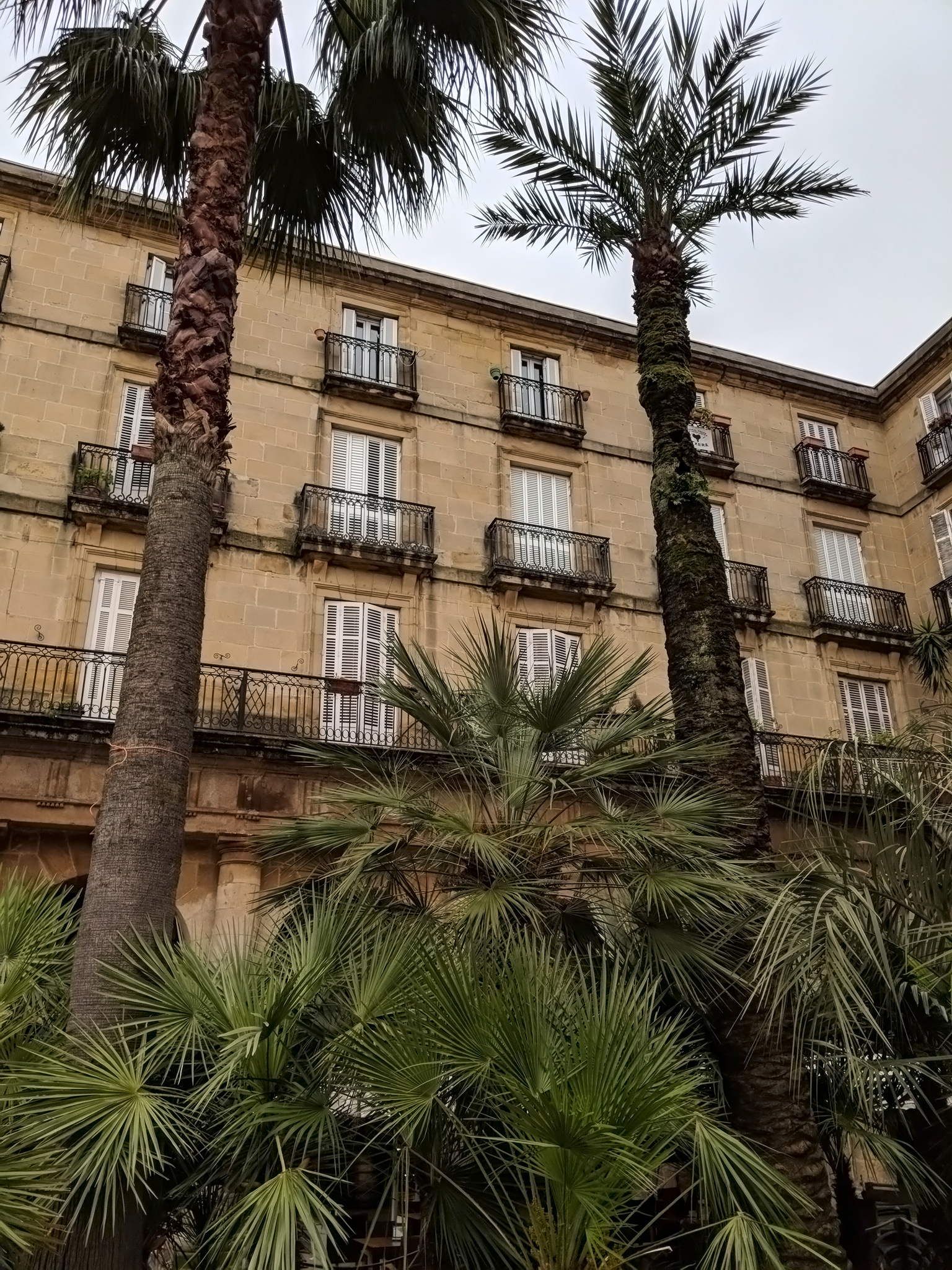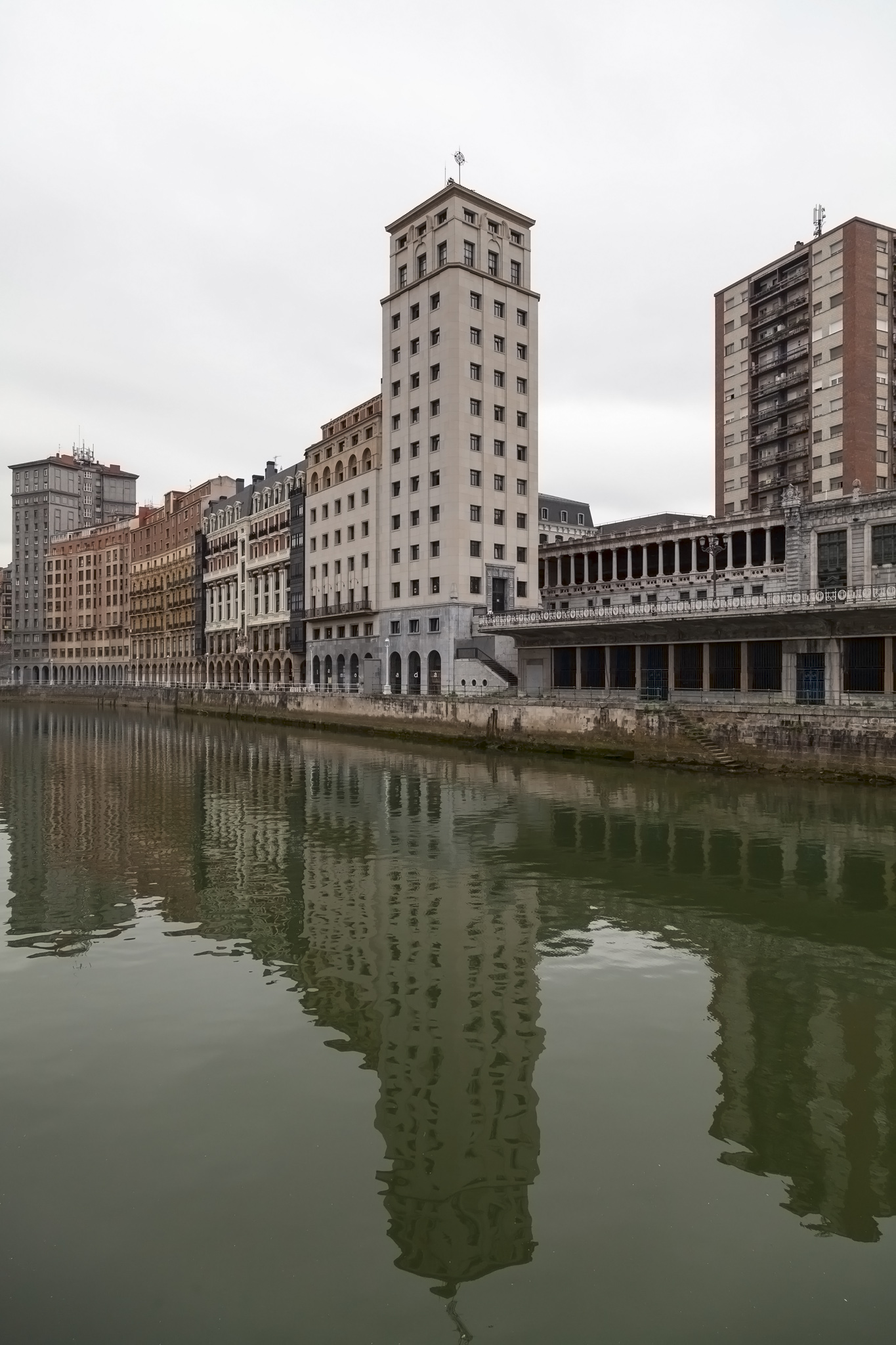We had one “must do” activity during our call at Bilbao on the Sapphire Princess and that was to visit the Guggenheim Museum which we understood was reasonably cheap and easy to get to from the port. Despite that, because we like to get a more guided view of a place on a first trip to somewhere new to get our bearings, we elected to take an organised excursion with Princess Cruises that would tick off our museum trip and include a walking tour of some of the historic areas of Bilbao itself. This would turn out to be something we ultimately regretted doing.
Getxo
The first thing to note about visiting Bilbao on a cruise ship is that the terminal is located in Getxo, around fifteen kilometres to the north of the heart of the city. The cruise port provides free shuttles into Getxo from where it’s fairly easy to use public transport into Bilbao (the metro system seemingly the most convenient) and it’s likely that Princess were running a service into the city from the port although I don’t know this for certain and don’t know the pricing as it’s not something we needed to worry about. Getxo looked like a pretty nice place from what we saw as we drove through it; it’s probably worth a look around on its own if you’re visiting this particular port on more than one occasion if only for the Vizcaya Bridge that we saw in operation from the coach windows as we made our way along the bank of the Nervión river to our destination.


Bilbao
The coach drop-off point for our walking tour of Bilbao was beside El Arenal park, a short distance from the Catholic church of Saint Nicolás, an 18th-century building in Baroque style built to honour the patron saint of sailors and apparently a meeting point for sailors before they would set off to sea. Sadly, we wouldn’t be entering any buildings during this walking tour because of the relatively short amount of time in the city so we never got to see its octagonal-shaped interior.





El Arenal park has a number of public toilets and this produced the first irritation in a number that would diminish the enjoyment of this particular cruise excursion. It really hadn’t been that long since we’d got off the Sapphire Princess (a little over half an hour maybe) but around a quarter of our coach apparently needed to go to the loo. Now, I know that some people may have bladder problems so this in itself wouldn’t be that big a deal except we weren’t the only coach that had parked up and the number of people from the various vehicles far exceeded the number of cubicles. Again, just one of those things that happens with scheduling so it shouldn’t be that annoying except two women in our group managed to be last in the queue or fell asleep in the toilets or had a really long chat or something. Whatever it was meant that the rest of us stood around for over twenty minutes before they casually wandered back to us and we could set off. On what was a fairly short excursion anyway this was a large amount of time to lose and, in fact, it meant that at the conclusion of our walking tour of Bilbao we were only left with about fifteen minutes of free time; not enough to really do anything.
Our visit to the Basque city coincided with Heineken promoting rugby and a festival due to take place in the park. We wouldn’t be around for any of that, though.
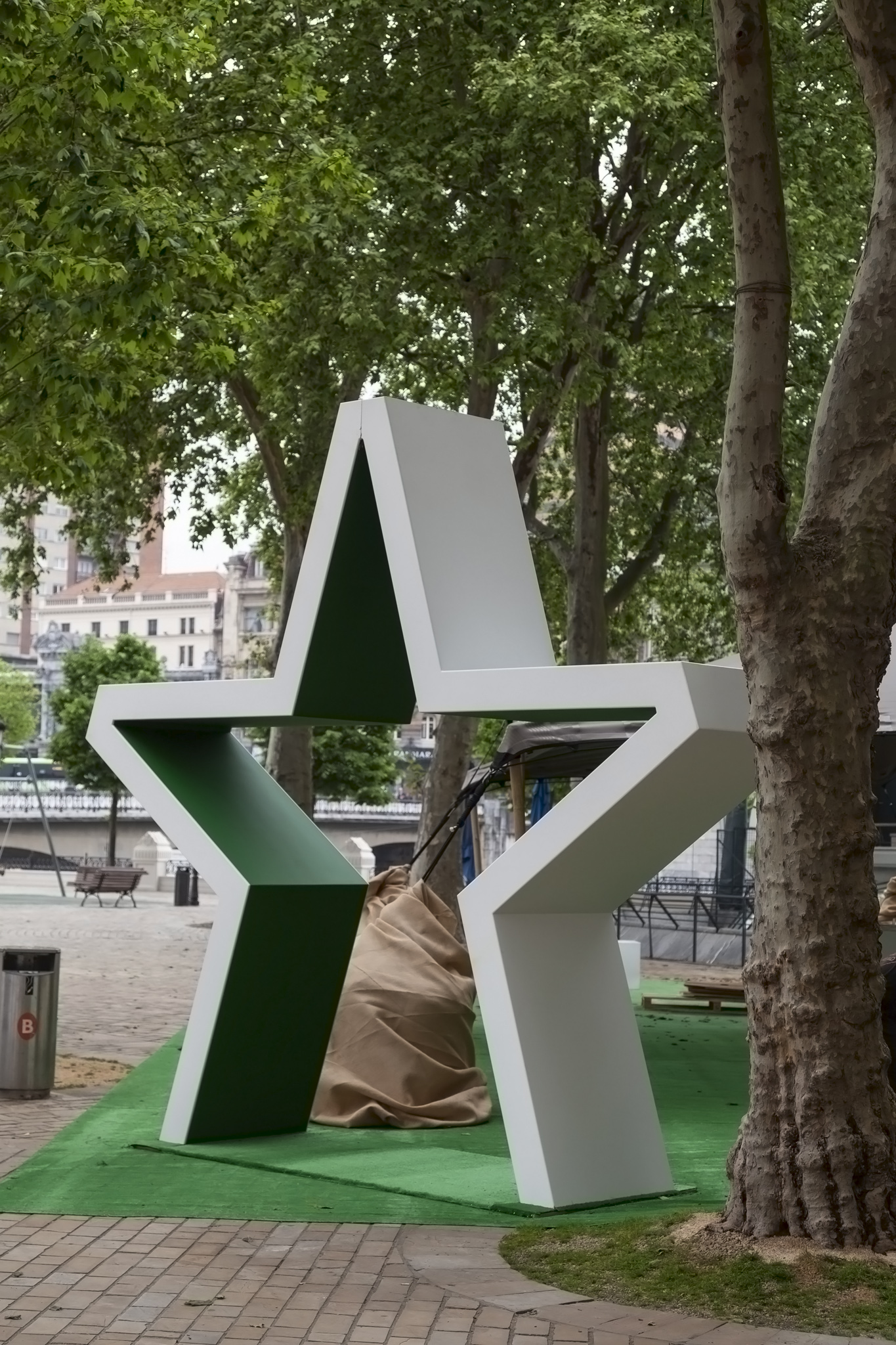
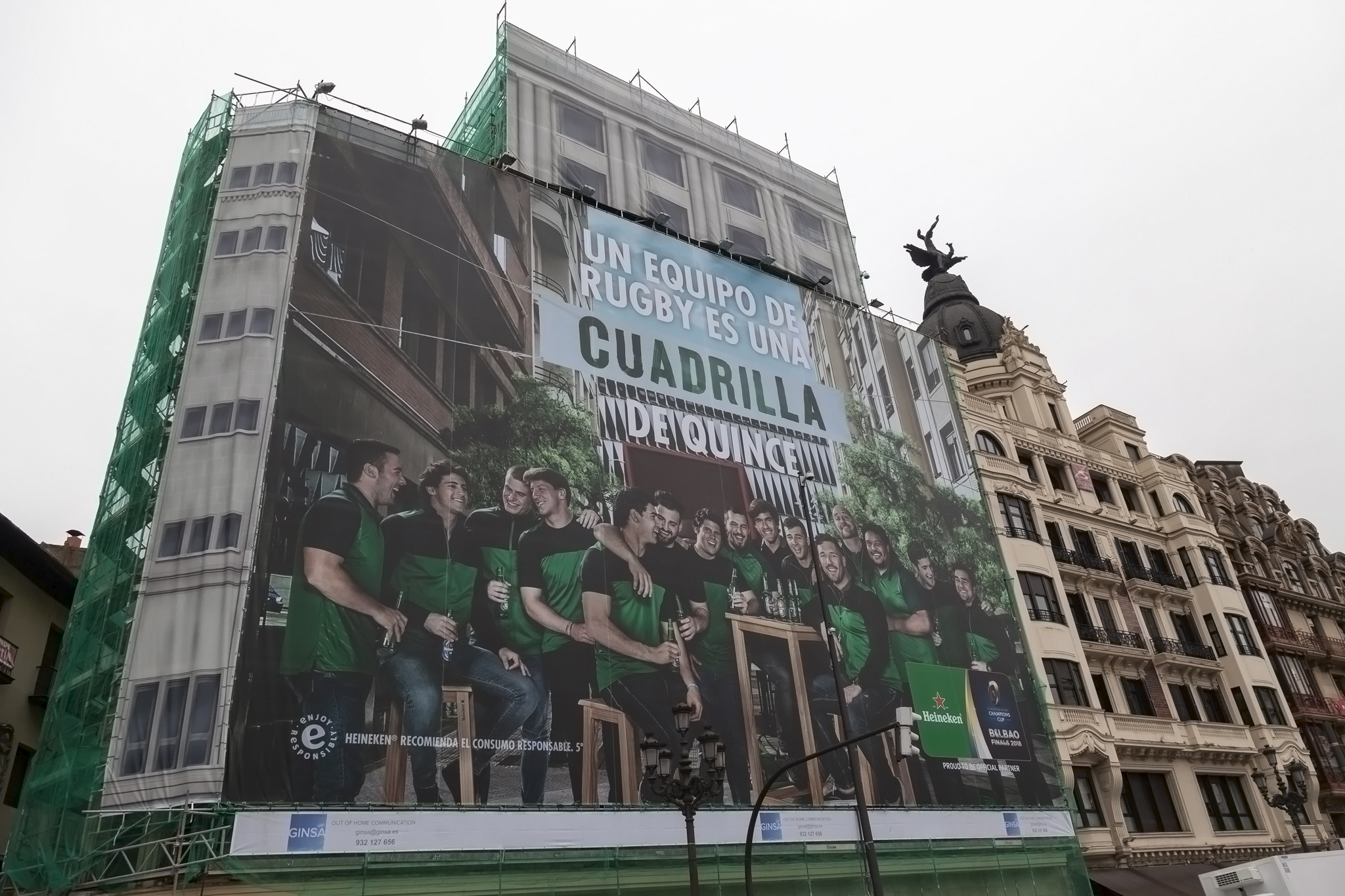
We were then led into the narrow streets of the old town of Bilbao by our very knowledgeable guide. While generally of the same style of architecture the various, often colourful facades of the tall buildings in this part of the city lent everything a nicely eclectic look and there were some lovely little stonework touches on some of the buildings, some of them no doubt very old indeed. The weather, unfortunately, wasn’t the best it could be from a photographic perspective; a uniform blanket of white cloud over a confined, dark area of streets does not make for the most attractive of pictures. Still, these old town layouts always have that sense of casual evolution over their curving, wandering routes rather than something designed which gives them a lovely feel when you’re strolling through them.


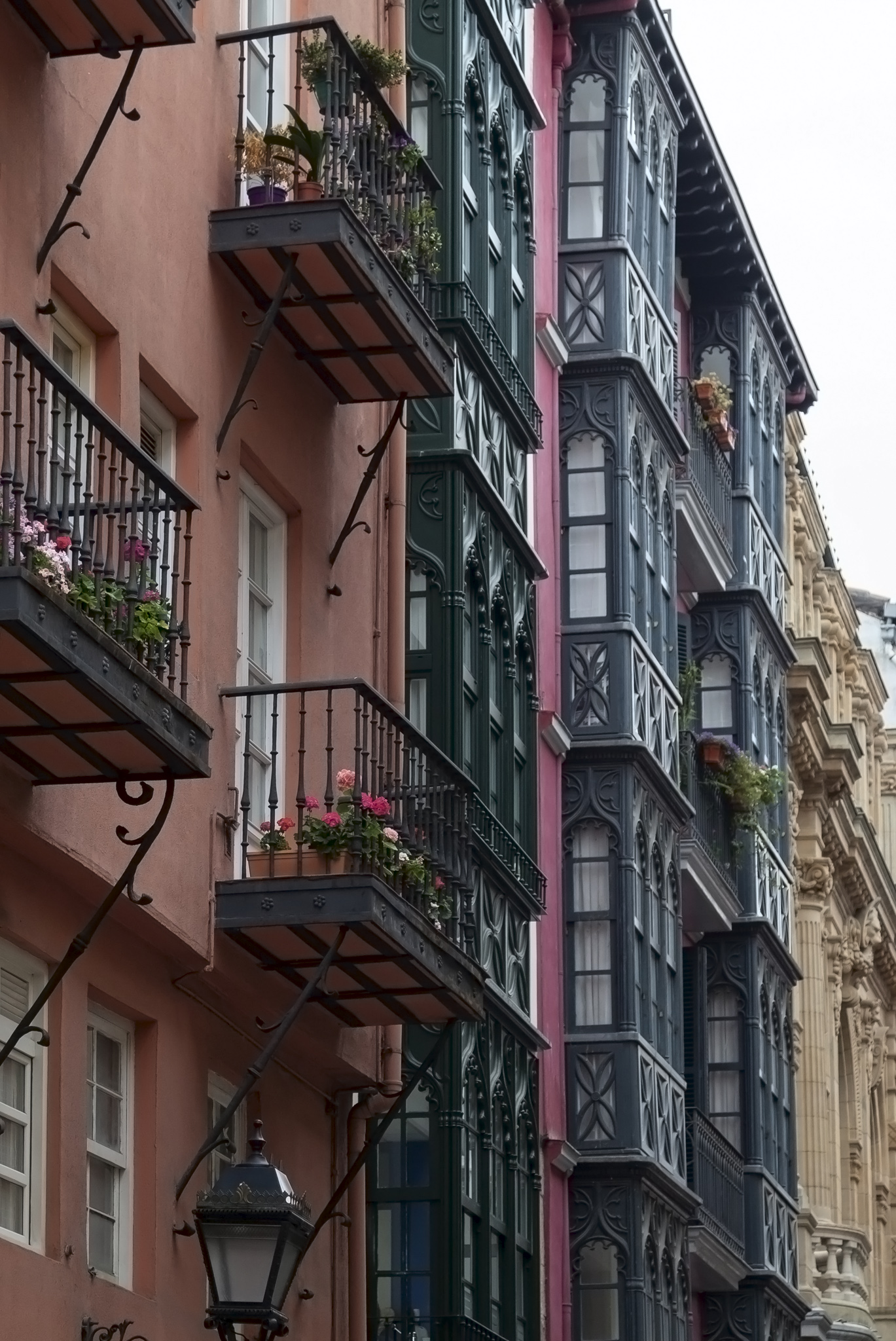
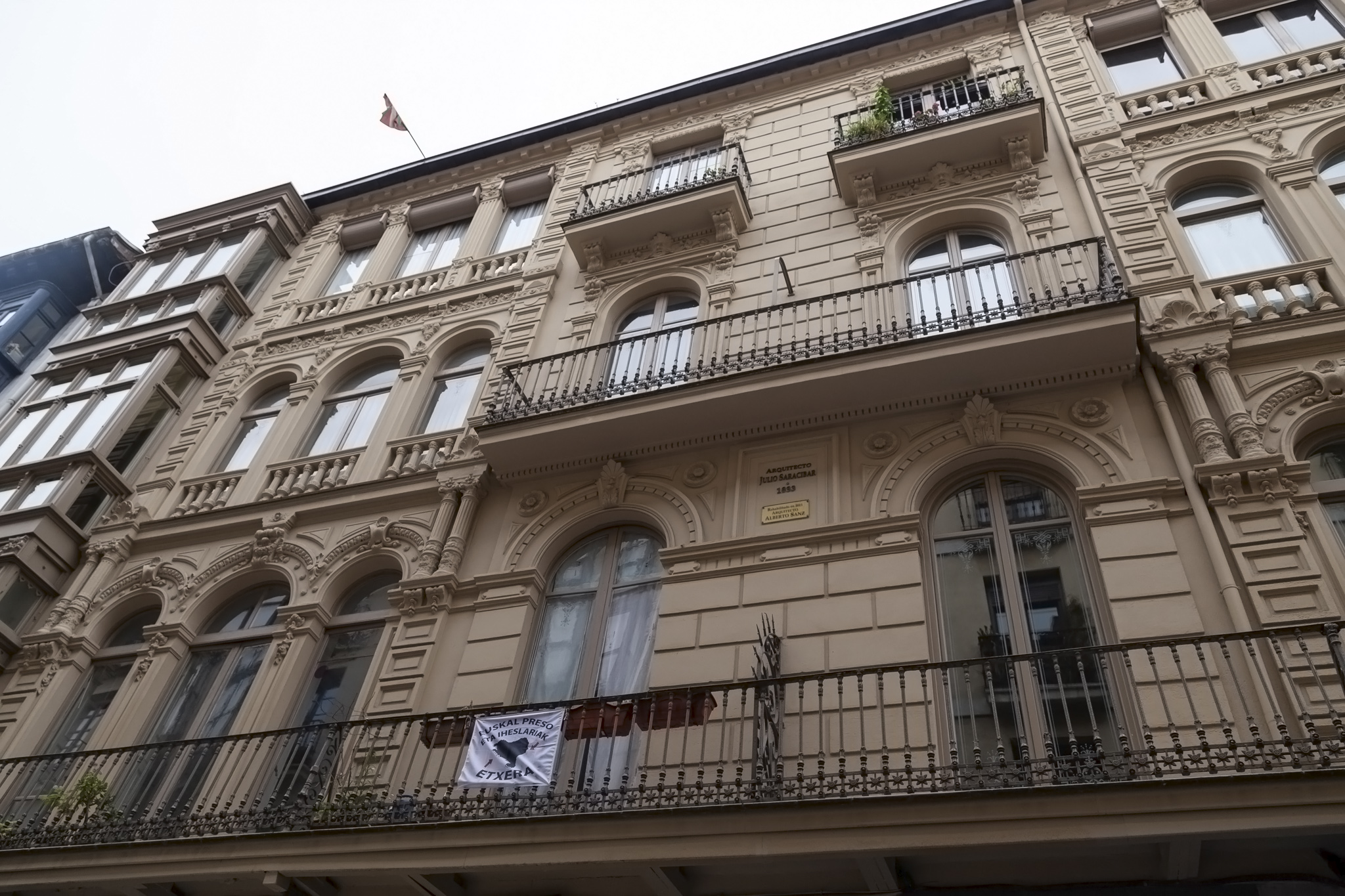


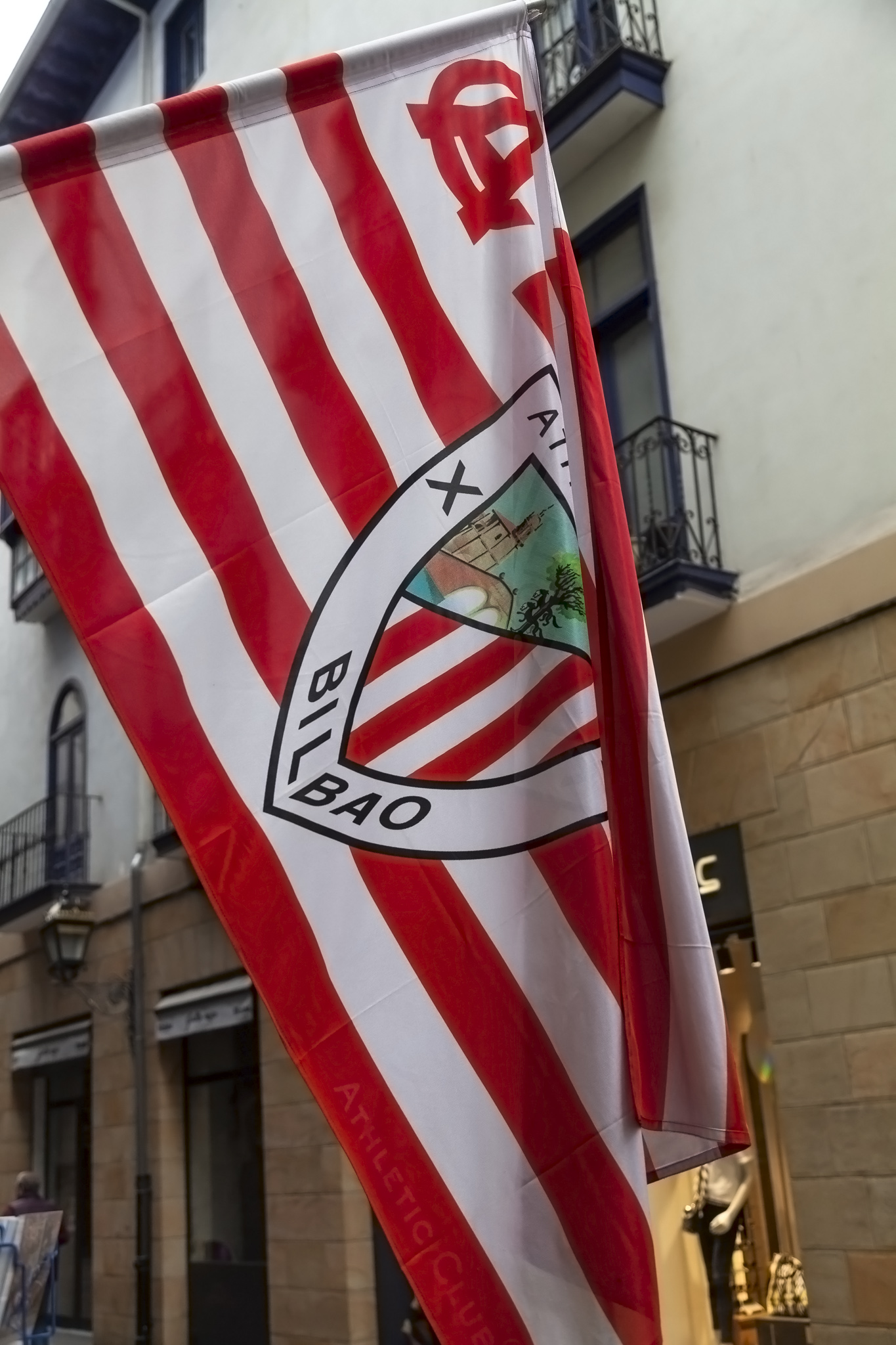
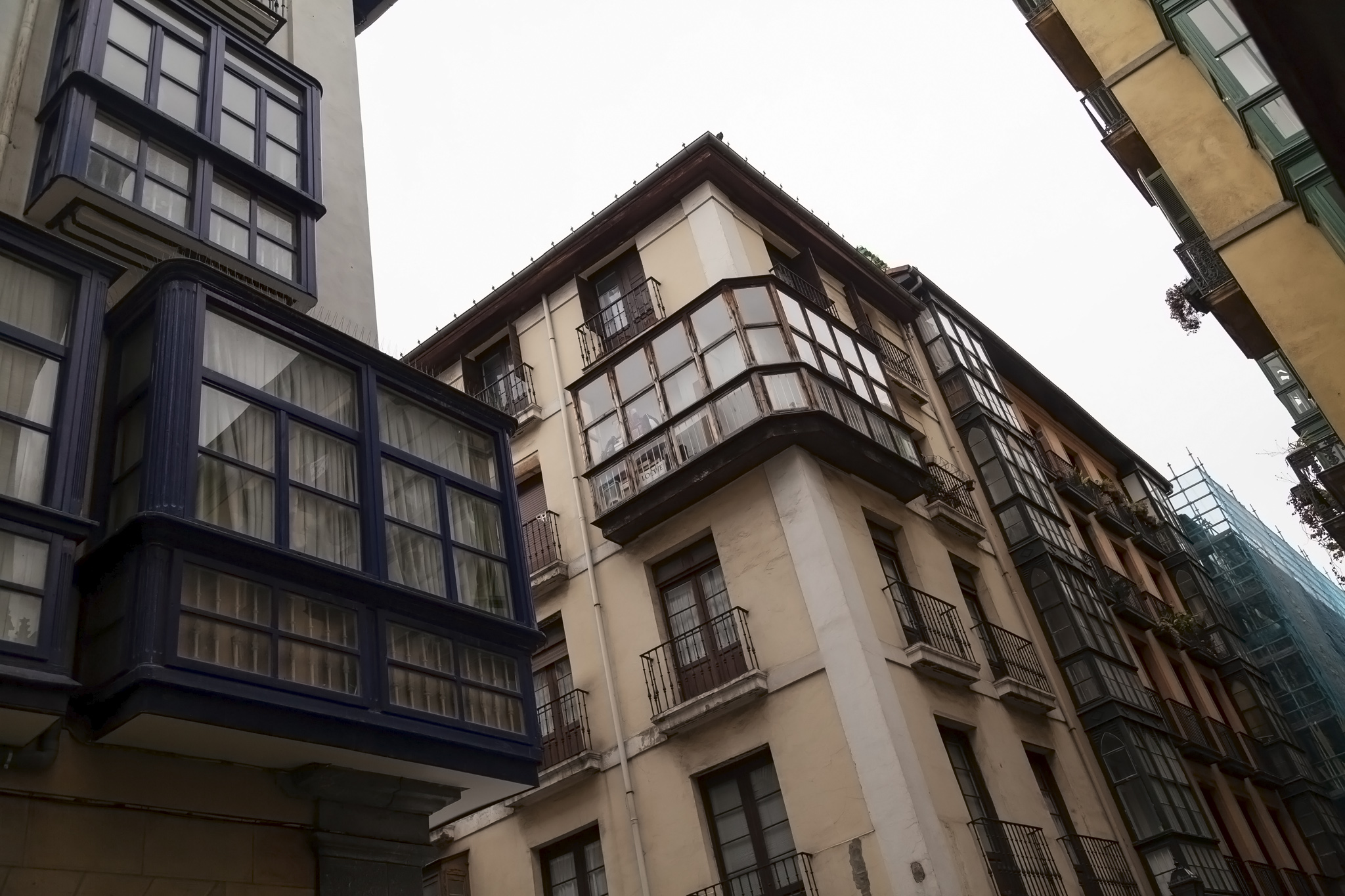
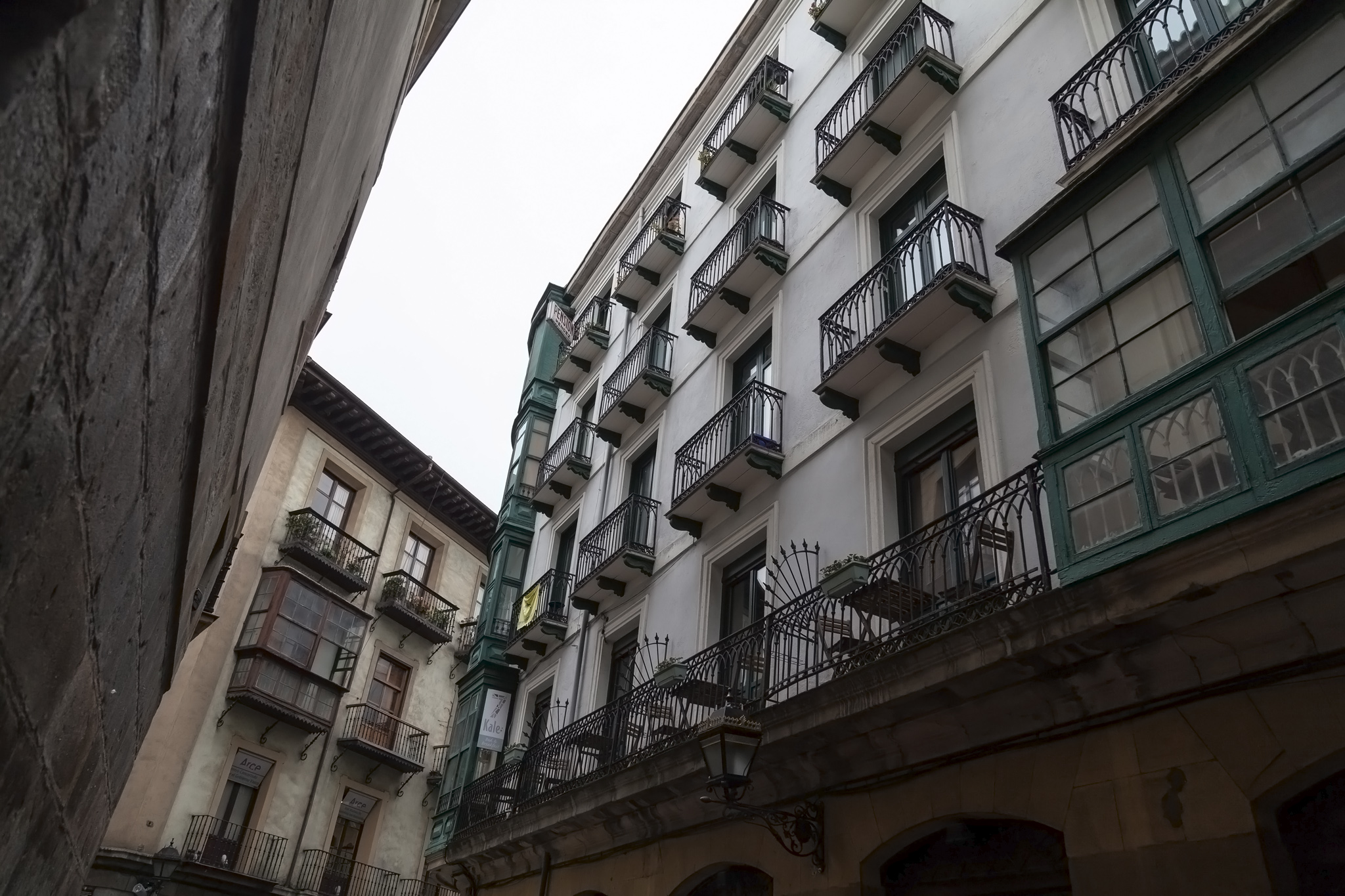


You might notice that a lot of the photos I took as we walked through Bilbao are quite elevated. Generally, I like to grab photos with people in them as they add life and scale to the pictures but the tendency towards angled-up shots boils down to the second irritation, that being one of the order in which the two aspects of the excursion took place. As I’ve said already, there were two parts to this trip: the museum visit and the walking tour. It would have been far better for the museum to have been the first stop rather than the order in which it was done for a very simple but quite important reason if you’re thinking of coming to the city: trucks and vans are permitted in the narrow town streets up until 11:00 in the morning in order to load and unload goods for the shops. What this amounted to for us was rather than a pleasant stroll through a pedestrianised section of the historical part of Bilbao learning its history we were instead often pressed up against buildings as vans rumbled past, occasionally struggled to hear anything over idling engines or the sound of tailgates lowering crates, and generally presented with little sight of the allegedly interesting buildings due to trucks parked in front of them. Just as our walking tour came to an end so all the vehicles disappeared from the streets; had we visited this after the museum it would have been far more enjoyable. Due to the relatively short distance between the Guggenheim and the old town there really didn’t seem to be much of a logistical reason why this tour sequence couldn’t have been swapped around and that was the feedback I provided to Princess.

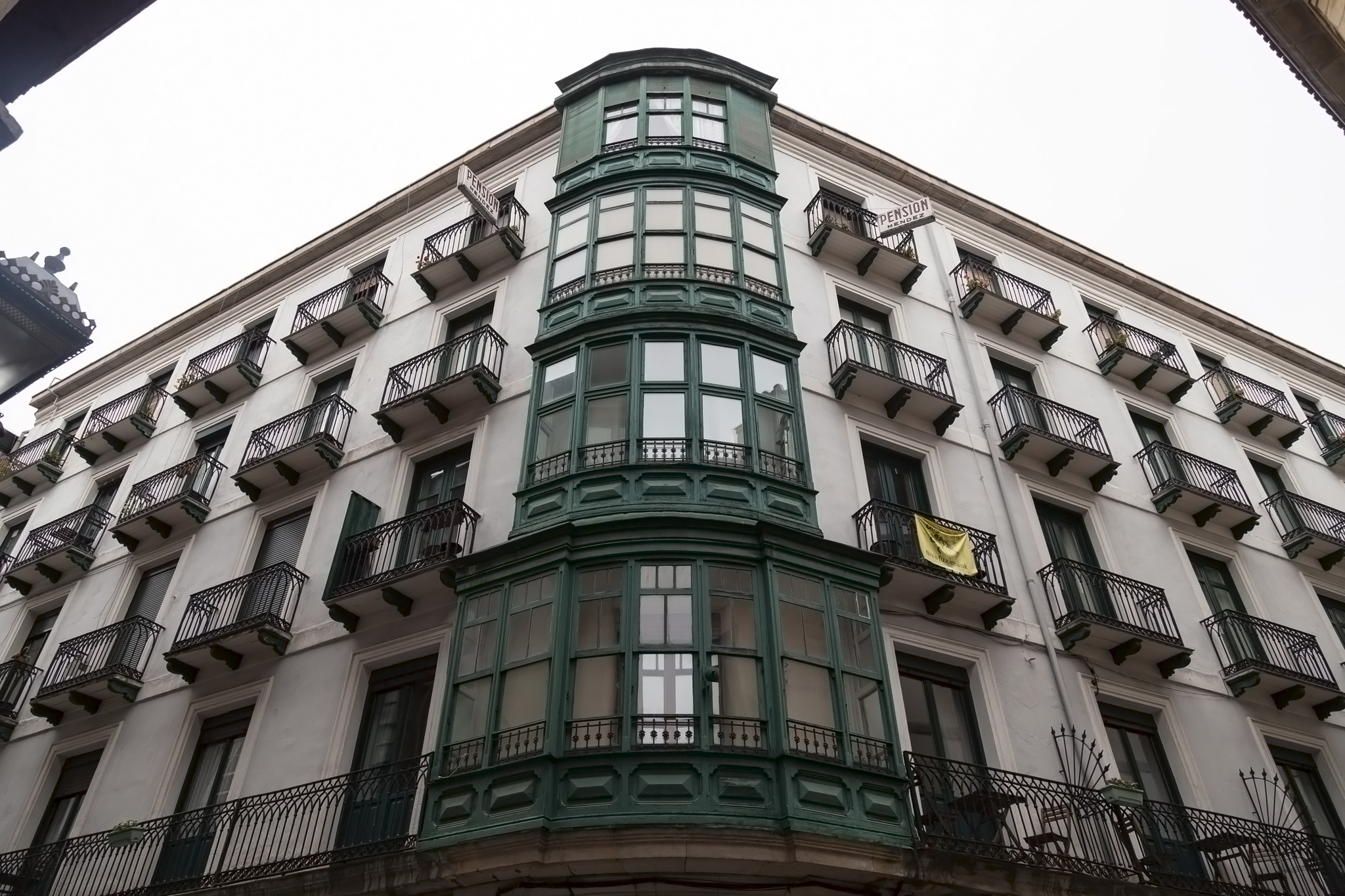
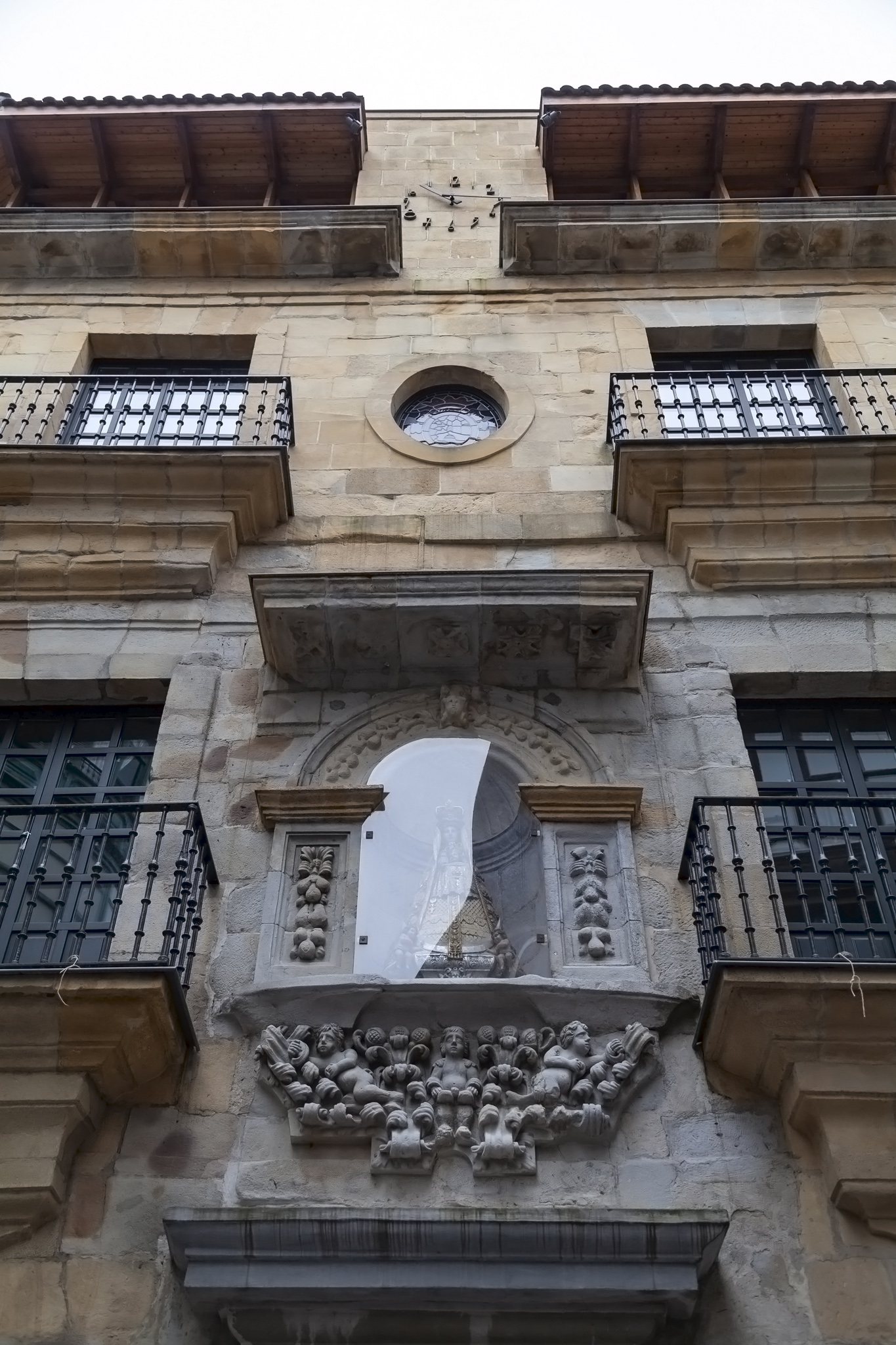





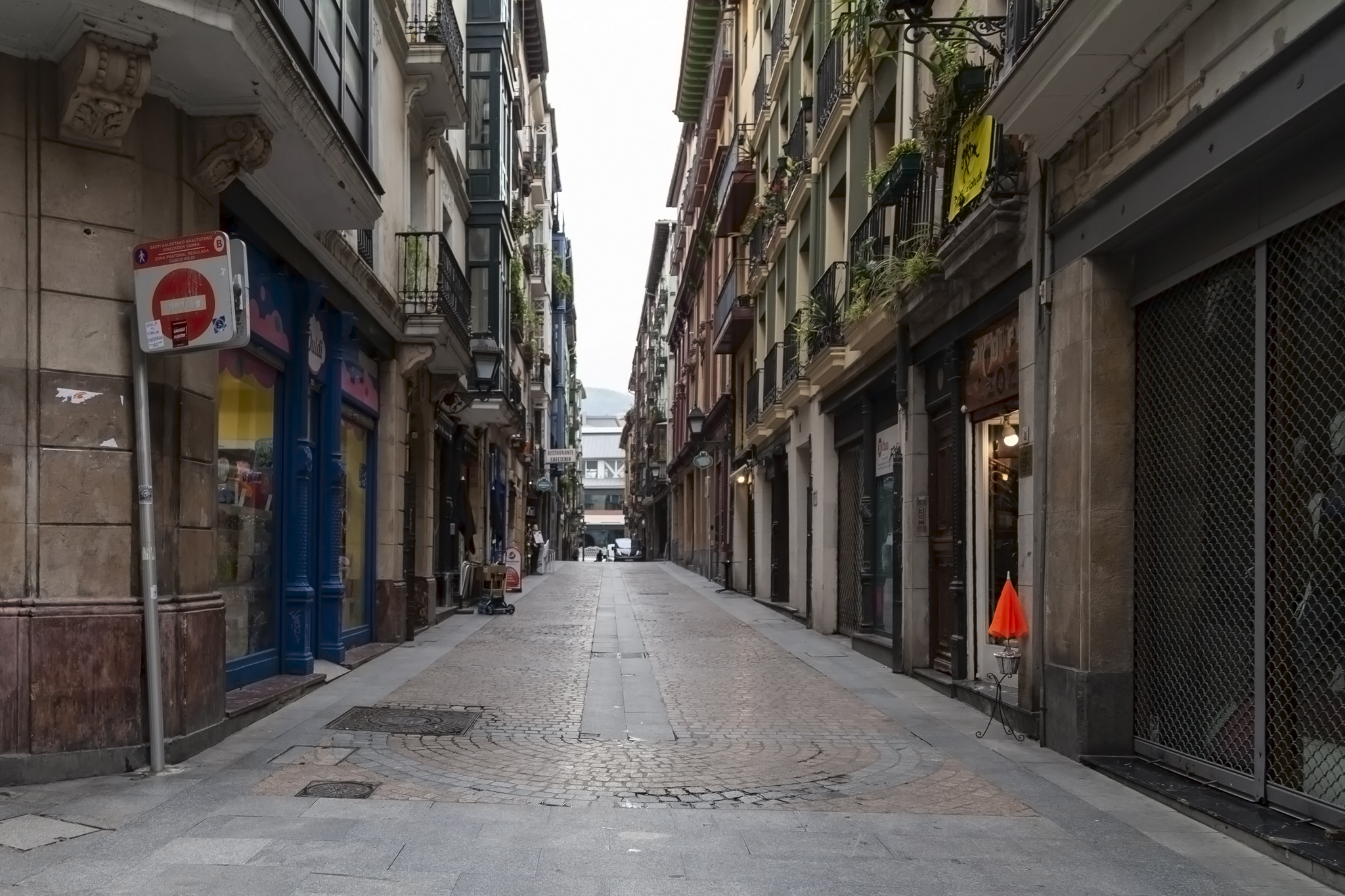






Built in the 14th century and originally just a church, Santiago Cathedral proved an interesting stop for us as the final port on our cruise would be Santiago de Compostela, both places being named for Saint James as part of the pilgrimage route across the north of Spain.






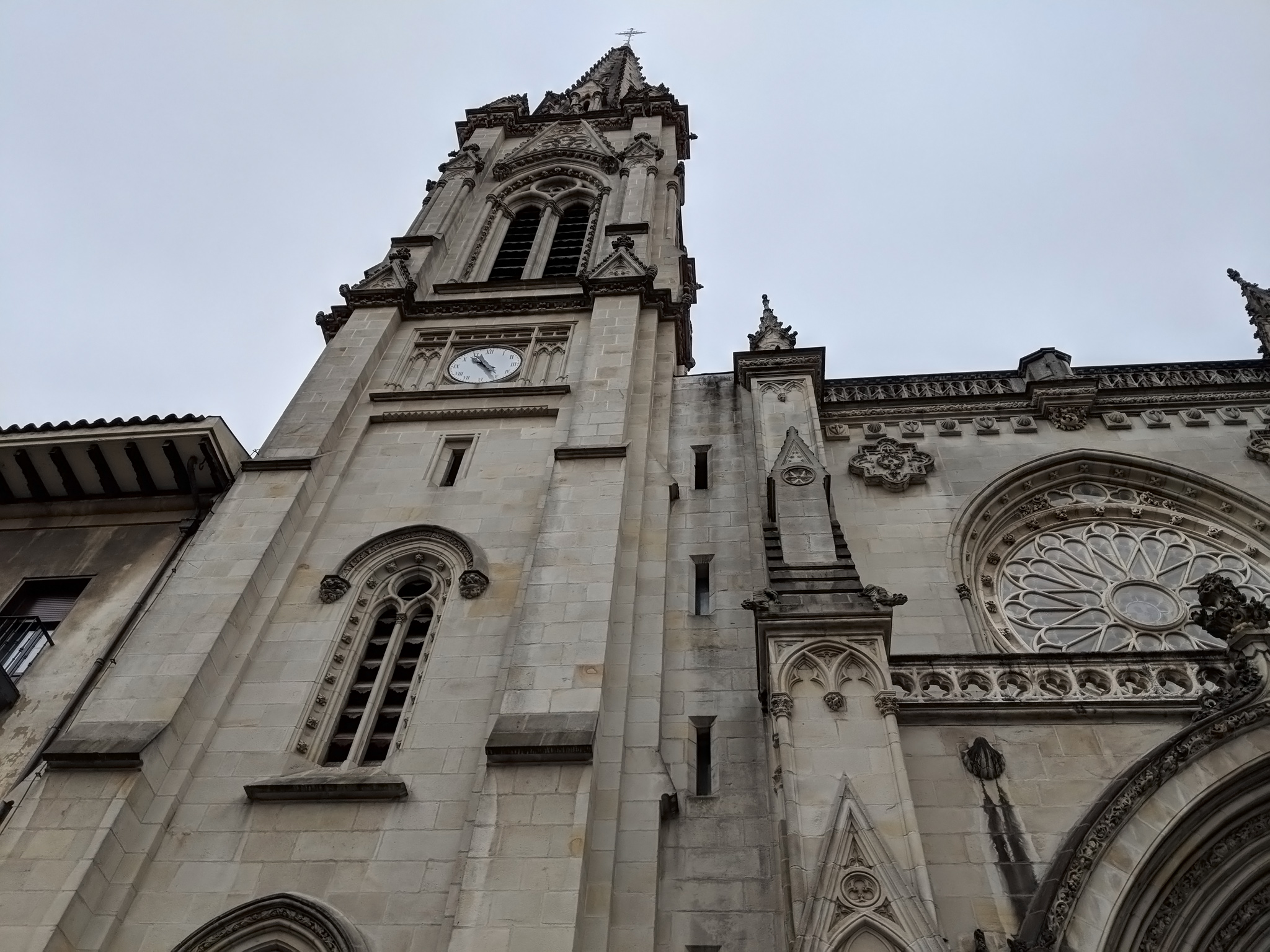
The final gathering point – thankfully vehicle-free – was Plaza Nueva, a large and attractive square built in the 19th century and surrounded by arched, covered walkways housing plenty of shops and restaurants. One of the main buildings was the seat of the regional government until a new location was built specifically for the purpose and the square now often hosts tournaments or festivals.
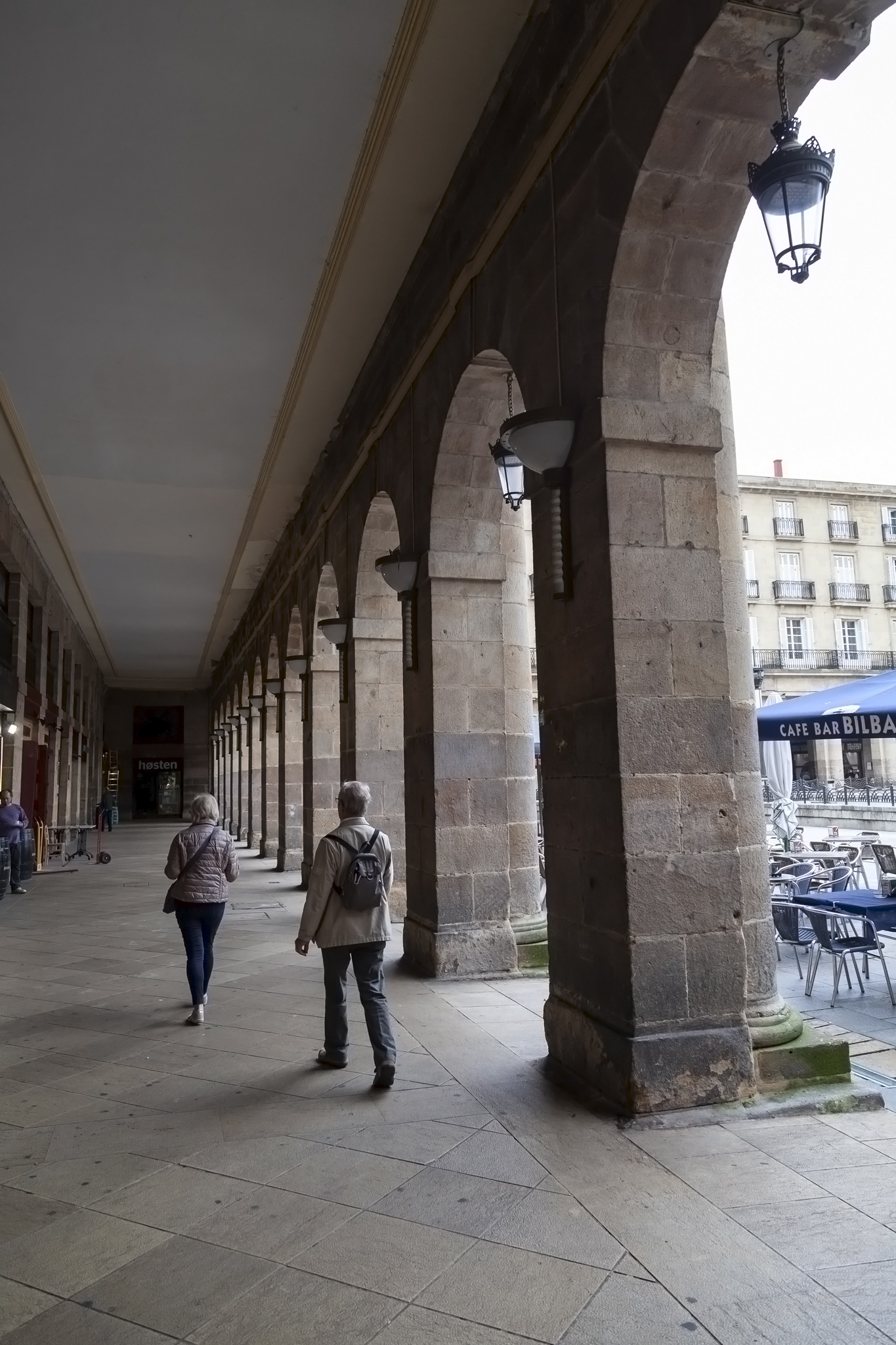








With a look at her watch our tour guide then told us we had a quarter of an hour to explore on our own before meeting back at the coach. This just wasn’t anywhere near enough time to do anything of note so we headed immediately out of the old town area and down past the theatre to the river’s edge to grab a few photos of something rather lovely-looking we’d spotted on our way in: the Santander-Bilbao Concordia train station. Specifically, what had grabbed my eye was the gorgeous art nouveau design by Severino Achúcarro dating to the turn of the 20th century. Some of Achúcarro’s design work had also made it onto the facade of the cathedral so this rounded off our short exploration of Bilbao quite nicely.


Photos taken we made our way back to the coach and then sat around for a further ten minutes after our due departure time waiting for two women to stroll back late without so much as an apology for eating into what would be our museum-visiting time. Would it surprise you to know that it was the same two women who we’d had to wait twenty minutes for at the start of the walking tour? No, no it probably wouldn’t.







The walking tour of Bilbao could definitely have been better arranged and we had some bad luck in having two somewhat selfish fellow tourists along with us. The streets of the old town felt like there was more there to discover with a bit more time and we’d love to go back at some point to do just that but we were, in the end, a bit disappointed with this portion of this cruise excursion.






